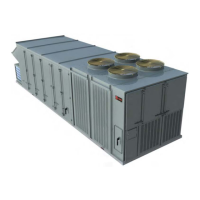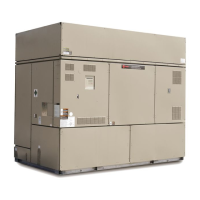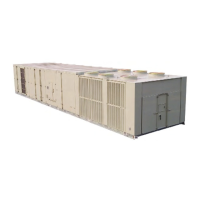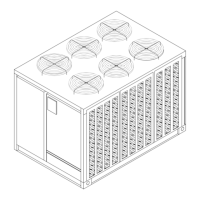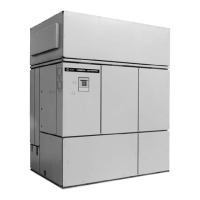Installation
RT-SVX36K-EN 63
Select a fuse rating equal to the RDE value. If the RDE value
does not equal a standard fuse size as listed in NEC 240 -
6, select the next higher standard fuse rating.
Note: If the selected RDE is greater than the selected MOP
value, then select the RDE value to equal the MOP
value.
b. Dual Source Power units (200V and 230V)
These units will have two circuit values shown on the
nameplate.The first circuit value will be the refrigeration
(cooling mode) values calculated using calculation #1
above.The second set of circuit values shown on the
nameplate will be for the electric heating circuit as follows.
MCA=(1.25xLOAD3)
MOP=(1.25xLOAD3)
Select a fuse rating for the electric heating circuit that’s
equal to the MOP value obtained in the equation above. If
the MOP value does not equal a standard fuse size as listed
in NEC 240 - 6, select the next lower standard fuse rating
(see note below for exception).
Note: If selected MOP is less than the MCA obtained in
the equation above, then select the lowest
standard maximum fuse size which is equal to or
larger than the MCA, provided the selected fuse
size does not exceed 800 amps.
RDE=LOAD3
Select a fuse rating for the electric heating circuit that’s
equal to the RDE value. If the RDE value does not equal a
standard fuse size as listed in NEC 240 - 6, select the next
higher standard fuse rating.
Note: If the selected RDE is greater than the selected MOP
value, then select the RDE value to equal the MOP
value.
Disconnect Switch Sizing (DSS)
• Calculation #1 - SX, SF, SA, SL, or SS Single Power
Source Units
DSS=1.15X(LOAD1+LOAD2+LOAD4)
• Calculation #2 - All SEH_ Single Power Source Units
DSS = 1.15 X (LOAD 3 + Supply Fan FLA + Exhaust Fan FLA)
PLUS
DSS=1.15X(LOAD1+LOAD2+LOAD4)
Use the larger value of the two calculations to size the
electrical service.
• Calculation #3 - SEHL (200/230 Volt) 20 - 75 Ton Dual
Power Source Units
DSS = 1.15 X LOAD3 for the Electric heaterAND Calculation
#1 for the Refrigeration Components
Field Installed Control Wiring
The Rooftop Module (RTM) must have a mode input in
order to operate the rooftop unit.The flexibility of having
several system modes depends upon the type of sensor
and/or remote panel selected to interface with the RTM.An
overall layout of the various control options available for
a Constant Volume application, with the required number
of conductors for each device, is illustrated in Figure 40,
p. 57. Figure 43, p. 71 illustrates the various control
options with the required number of conductors for a
Variable Air Volume application.
Note: All field wiring must conform to NEC guidelines as
well as state and local codes.
The various field installed control panels, sensors,
switches, and contacts discussed in this section require
both AC and DC consideration.These diagrams are
representative of standard applications and are provided
for general reference only. Always refer to the wiring
diagram that shipped with the unit for specific electrical
schematic and connection information.
WARNING
Hazardous Voltage!
Disconnect all electric power, including remote
disconnects before servicing. Follow proper lockout/
tagout procedures to ensure the power can not be
inadvertently energized. Failure to disconnect power
before servicing could result in death or serious injury.
WARNING
Proper Field Wiring and Grounding
Required!
All field wiring MUST be performed by qualified
personnel. Improperly installed and grounded field
wiring poses FIRE and ELECTROCUTION hazards.To
avoid these hazards, you MUST follow requirements
for field wiring installation and grounding as described
in NEC and your local/state electrical codes. Failure to
follow code could result in death or serious injury.
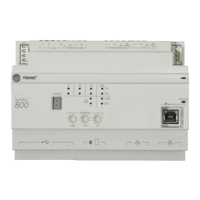
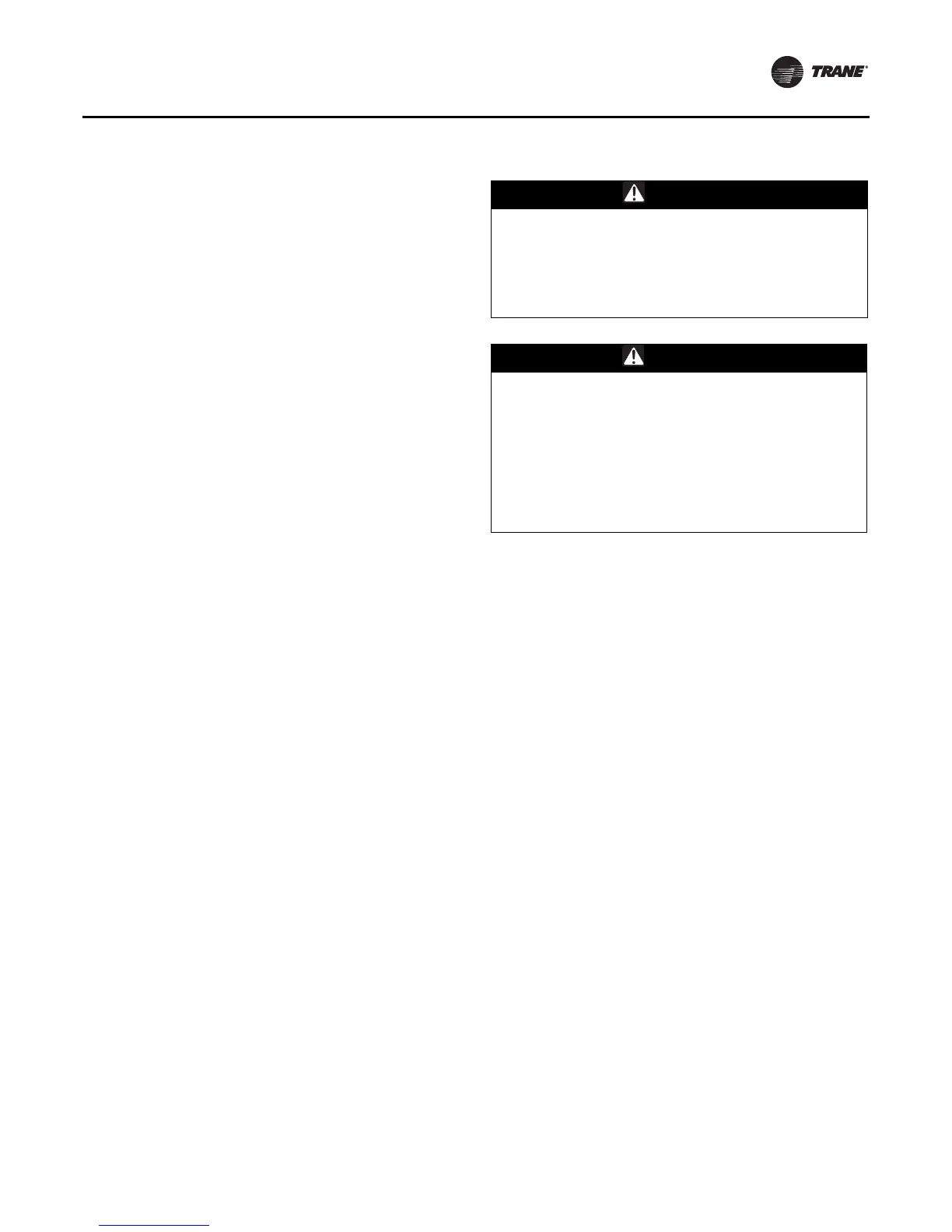